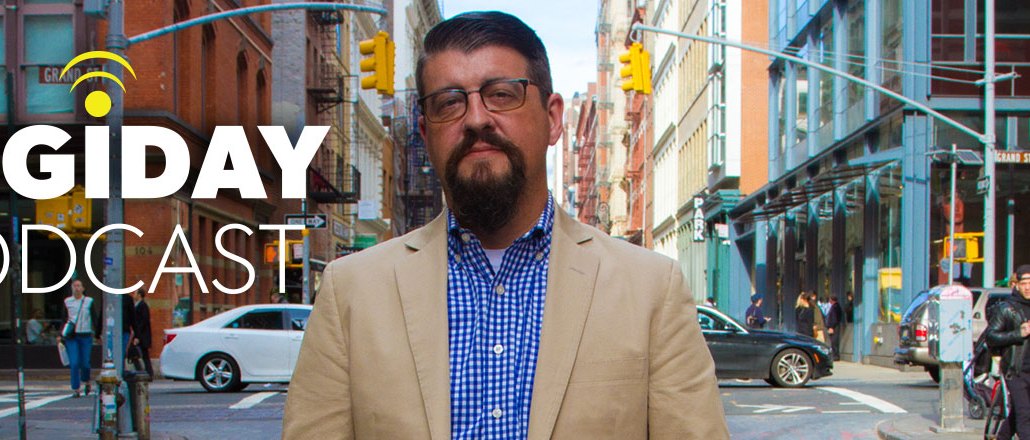How Stuff Works’ Jason Hoch: There is no podcasting bubble

Subscribe: iTunes | Stitcher | RSS
Podcasting is having a moment.
After years of operating on the periphery, the medium has become a newfound area of focus, not just for longtime podcast publishers but for A-list newcomers like Time Inc. and The New York Times, which are using their content distribution muscles to quickly scale themselves up. It’s also become more interesting to advertisers, who are coming around to the idea of connecting to a highly desirable audience on demand.
In this week’s episode of the Digiday Podcast, we sat down with Jason Hoch, the chief content officer of How Stuff Works, the fourth-largest podcast publisher in America, and the largest one not connected to a public media organization like NPR. Its shows, which include “Stuff You Should Know” and “Stuff Mom Never Told You,” have attracted large, loyal listener bases by relying on the expertise and passion of its hosts, and trusting in the long tail: Half of HSW’s monthly downloads come from episodes in its sizable back catalog.
Below are a few highlights from the conversation, edited here for brevity.
A boom, not a bubble
In the past two years, podcasting has gone from a curiosity to an area of investment for publishers both new and old. “The quality is way up from where it was a couple years ago,” Hoch said, who added that he barely has enough time to listen to all the shows his own company makes.
Yet despite the fact that, by Hoch’s count, there are as many as 150 high-quality shows out there from top-tier publishers, he thinks that there’s no bubble — and that things can only improve. “There’s not too much content,” he said. “I continue to think the best days are ahead.”
Ads should be read
Dynamic ad insertion, audience targeting and data all used to be the stuff of fantasy in podcasting. Starting in 2017, they are poised to enter the mainstream, an opportunity that Hoch says comes with a major responsibility. “Our job as an industry is to push back and say, we’re not the same as terrestrial radio,” Hoch said, explaining that while these new tools make it easier than ever for a brand to port its radio advertisements onto podcasts, dynamic insertion serves everybody best if publishers resist that temptation.
“When we work with a big brand and advertiser, we’re going to have a conversation about what podcast content is,” he explained. “But we’re also going to have a conversation that says, ‘Make sure we’re working on the creative too, [to involve] that personal experience with the host. Because you’re going to win that way.”
Transmedia takeoff
Podcasts are no longer confined to the space between a listener’s ears. Publishers ranging from This American Life to ESPN have begun experimenting with making podcasts part of a larger storytelling tapestry, where sometimes the podcast is the axis around which other digital elements turn; in other cases, all the elements stand together on their own.
While these larger endeavors often require substantial help from advertising partners, Hoch says he sees more of them on the horizon. “From a consumer standpoint, there’s nothing better.”
More in Media

Walmart rolls out a self-serve, supplier-driven insights connectors
The retail giant paired its insights unit Luminate with Walmart Connect to help suppliers optimize for customer consumption, just in time for the holidays, explained the company’s CRO Seth Dallaire.

Research Briefing: BuzzFeed pivots business to AI media and tech as publishers increase use of AI
In this week’s Digiday+ Research Briefing, we examine BuzzFeed’s plans to pivot the business to an AI-driven tech and media company, how marketers’ use of X and ad spending has dropped dramatically, and how agency executives are fed up with Meta’s ad platform bugs and overcharges, as seen in recent data from Digiday+ Research.

Media Briefing: Q1 is done and publishers’ ad revenue is doing ‘fine’
Despite the hope that 2024 would be a turning point for publishers’ advertising businesses, the first quarter of the year proved to be a mixed bag, according to three publishers.








